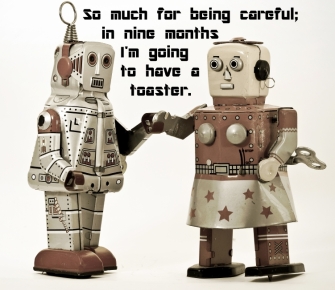Wait–You mean my human characters?
It may seem like a stupid question, but it’s not. In the process of working our way out of caves and into cars, we have developed certain patterns of behavior which are common to all races and nationalities. The pattern I find significant, as it relates to storytelling, is how we respond to crisis. We’ve been doing it for a long, long time, and we do it the same way, over and over.
So, again, are your characters — fiction or non-fiction — acting like real people?
Need more detail? Imagine you’ve just been in an accident, or you’ve received unexpected news (good or bad), or something else of significance has occurred. What happens next?
Here’s where the behavior pattern kicks in. It involves four steps which I first learned about in a blog by bestselling author Jim Butcher. They are:
- An emotional reaction to what just happened, followed by,
- A review and evaluation of what just happened, followed by,
- The anticipation of a response to what just happened, followed by,
- A choice based on the foregoing.
That may look like a heap of stuff, but if taken a step at a time, it will feel pretty familiar. Why? Because this is how almost every member of our species reacts! For example:
Imagine you’re a male college student, and you’ve just learned that a female friend is pregnant with your child. (Change the background circumstances to see how it works with other dynamics in play.)
1) Your first reaction is emotional. “I’m going to be a daddy!” Or, if this doesn’t come as entirely happy news: “I’m going to be a daddy?” Or, “Wait–are you sure?”
2) Automatically, your mind will replay events leading up to this revelation, and you’ll try to evaluate your situation and maybe answer some of the questions you just asked. “I’m pretty sure I was in Pago Pago at the time,” or “You have me confused with my roommate,” or “Finally–I have a purpose in life!” Whatever.
to this revelation, and you’ll try to evaluate your situation and maybe answer some of the questions you just asked. “I’m pretty sure I was in Pago Pago at the time,” or “You have me confused with my roommate,” or “Finally–I have a purpose in life!” Whatever.
 3) After evaluating the situation, you’ll start figuring out how to respond, in other words, you anticipate what to do next. It could be a marriage proposal, or a name change coupled with a relocation to someplace far, far away. It might even be a short, probably ugly chat with your current girlfriend. (See note about background circumstances above.)
3) After evaluating the situation, you’ll start figuring out how to respond, in other words, you anticipate what to do next. It could be a marriage proposal, or a name change coupled with a relocation to someplace far, far away. It might even be a short, probably ugly chat with your current girlfriend. (See note about background circumstances above.)
4) Finally, you’ll make a choice about what to do, and this translates into action.
This works equally well for fiction or non-fiction. The thing to keep in mind is the order shown here–it’s always the same. Some phases may be more involved than others, and much depends on the severity of the crisis. But these are the steps we always go through, and we always go through them in this order.
If the characters in your memoir or novel don’t follow this pattern, they’re just not acting like real people. [Please note: I have no formal training in psychology or the study of human behavior, but I know what rings true. And this does. How it relates to sociopaths and/or psychopaths is fodder for another discussion.]
–Josh





Well, who knew! I’ll remember this for my next “oh, no!” character moment.
Hm. Maybe I should’ve said something about this long ago. Oh. Wait. I did! Thanks for sticking with me. [smile]
You’re right on target. If a writer omits any of the steps in this process, his/her writing won’t be authenticate. Thanks for the reminder.
De nada. Thanks for dropping by!